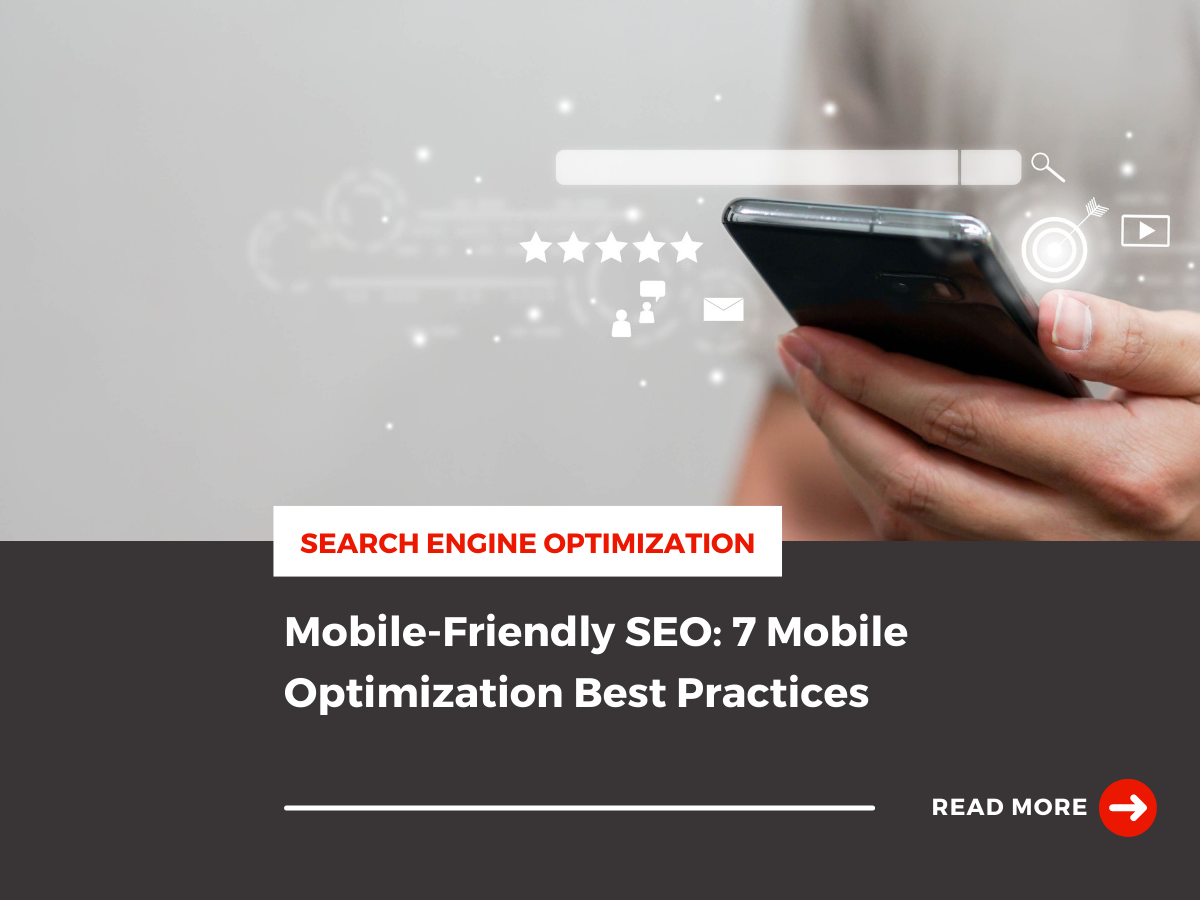Having a mobile-friendly website is more important than you might think. As of 2021, 63% of online searches start with a mobile device. As mobile devices continue to grow in popularity and become more advanced, we only expect this percentage to increase.
So what does that mean for your business?
If your website isn’t optimized to meet the needs of your mobile customers, it could negatively impact your bottom line and hurt your search engine rankings. It’s time to start prioritizing mobile optimization and ensure you’re developing a mobile-friendly website with the right mobile seo best practices.
Let’s take a closer look:
What Is Mobile-Friendly SEO?
Mobile-friendly SEO is all about using search engine optimization tactics and combining them with a top-of-the-line mobile device experience. This is integral to an effective digital marketing strategy because Google primarily uses the mobile version of a site’s content for indexing and ranking purposes.
Why Is a Mobile-Optimized Website Important?
For many individuals, the first impression of your business will come from a mobile device. If your website is not designed for the mobile experience, it can negatively impact their experience and drive them to your competitor’s website.
But there’s more.
With a mobile-optimized website, your site will be easy-to-understand for search engines and provide value to the user. With the help of readable, easy to digest content, you’ll be one step ahead of your competition and hopefully, have the opportunity to rank higher than them on search engines.
Not sure where to start? Don’t worry. We’re here to help.
We put together a list of our mobile SEO best practices to help you enhance the user experience and get your website noticed by potential prospects and search engines. Here are our 7 mobile seo best practices to help you get started:
1. Avoid Duplicating Content
You don’t need to duplicate your content for mobile and desktop. This can lead to cloaking, which is a violation of Google Webmaster Guidelines. Instead, you’ll want to use a responsive design that allows you to use the same piece of content for mobile and desktop. The responsive design utilizes media queries to easily transition the design of your webpage from devices and platforms.
2. It’s All About the User Experience
To improve your mobile search engine optimization, you want to start with the user experience. You may have the best SEO strategies and a top-of-the-line product offering. However, it might not be enough if you don’t have a mobile-friendly website with a well-thought-out design and clear CTAs.
For example, if a potential prospect needs to use their thumbs to zoom in and read your content, it disrupts their shopping experience and takes away from the value of your page. The user is more than likely going to exit your website and look for another option and move on.
The user experience is everything from the fonts and colors choices, to the design components. Ensure all design elements effectively translate to a mobile device and never take away from the user experience. To get started, always use mobile devices to look at your content before publishing it! That way, you can catch the problem before it becomes one.
3. Design Your Site for Speed
If your website is slow, you risk losing the customer. In fact, studies show that 1 in 4 visitors will leave a webpage if it takes longer than four seconds to load. To help with page speed performance, you’ll want to hide latency, otherwise known as “lazy loading.” This means it prioritizes above-the-fold elements and loads the rest of the components in the background.
Another option is to serve smaller-sized images on mobile devices and larger images on desktops. This is possible through srcset. Doing this will improve the loading time on a mobile device, improve the customer experience, and help your mobile search engine optimization.
4. Never Forget the Shortcuts
Let’s compare the mobile device experience with the desktop experience. The conversion rate on a mobile device is 1.81%, while on a desktop is 1.98%. This difference can be attributed to the goal of the customer. When you jump on your phone to browse the web or look up a company, you want quick and easy answers at the moment. You don’t want to scour the internet for answers or struggle with the shopping experience.
To ensure the mobile customer doesn’t give up or move to another website, you’ll want to simplify the experience with the help of shortcuts. Shortcuts can turn your site into a mobile-friendly website that’s easy to navigate and understand. There are several ways to do this.
For example, during checkout lean on third-party resources like Apple Pay or a built-in camera feature to capture credit card information. This eliminates the friction and helps streamline purchases. Maybe, you want to add a click-to-email button on your contact page so that it sends users directly to their email app on their phone to contact you.
Every business is different, if you aren’t sure where to start, put yourself in your customer’s shoes and move through the process.
5. Avoid Common Mobile SEO Mistakes
When juggling mobile search engine optimization with an excellent mobile user experience, you may make costly mistakes that affect your bottom line.
Here are some common mistakes to keep on your radar:
-
- While reworking your web design for mobile, you’ll want to ensure it doesn’t take away from your site speed.
- Don’t forget to optimize your titles and meta descriptions. Since the screens are much smaller, using clear and concise language with the right targeted keywords can help your content rank and deliver results.
- Fix your crawl errors the same way you’d fix your desktop version errors.
- Eliminate mobile-only 404s and redirect them to a different URL.
That’s just to skim the surface of common SEO mistakes businesses make. If you aren’t sure where to start, we recommend connecting with an SEO expert for a full site audit so you can catch these mistakes before they become a problem.
6. Prioritize Improving the Navigation Experience
The main difference between desktop and mobile is the navigation. The way a consumer navigates your website is always going to be different. Think about the size of the screen, the drop-downs, and all the navigation elements. These components may need to be revised to develop a mobile-optimized website. The best way to do this is by improving your content to chrome ratio.
Content to chrome ratio refers to the amount of space your site uses for the navigation elements. Desktops have more space, and room to work with, so it’s easier to see all the navigation elements on the webpage. However, with mobile, you’re dealing with a much smaller screen. So you’ll want to focus that space on the content rather than the navigation. You can do this by utilizing hidden and visible navigation elements, being more deliberate with your visual elements, or only listing the options on some of the web pages.
7. Always Test and Monitor Your Site
Once you have a mobile-optimized website, you’ll want to ensure you’re testing your site for flaws in the UX experience. You can do this by using Google’s Test My Site to help you see what your website will look like on different devices. Google will tell you what your mobile site speed is, your rating, and your quarterly trends. Google will also provide you with recommendations and a complete report.
Remember: When it comes to staying competitive, you’ll always want to look for ways to improve the experience across all platforms and devices.
How We Can Help You With Mobile Seo Best Practices
To stay competitive and relevant, mobile optimization should remain at the top of your to-do list. It’s one of the most crucial aspects of digital marketing if you want to see growth or increase your mobile conversions. If you aren’t sure where to start, lean on the team at Kanbar Digital. Our team of marketing professionals can help you develop a mobile-friendly website that yields results and boosts sales. We’ll help you strategically think about the user experience for the customer, all while getting noticed by search engines.
Ready to get started? Contact us today to learn more.




